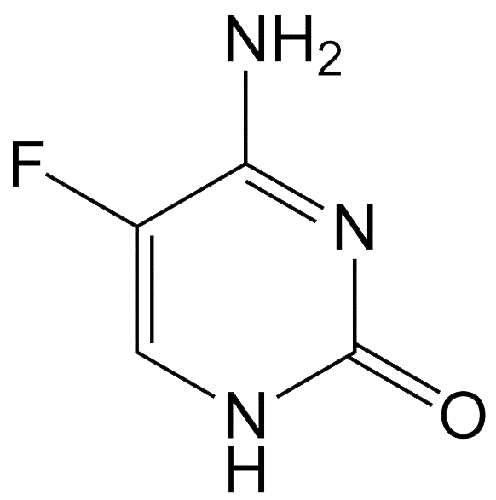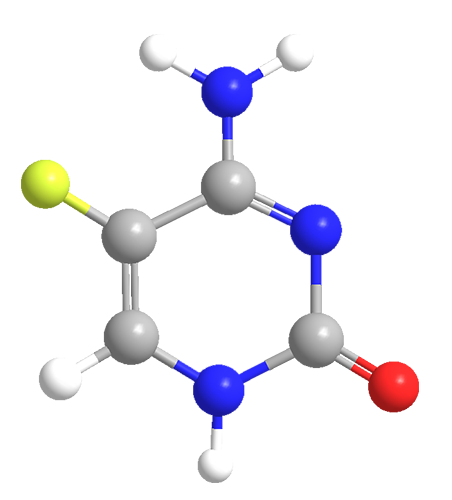What molecule am I?


Flucytosine is a 60-year-old medication used for treating fungal infections in humans and animals. It was synthesized by Robert Duschinsky and Edward Pleven at Hoffmann-La Roche (Nutley, NJ), along with Charles Heidelberger at the University of Wisconsin Medical School (Madison) in 1957. In the following few years, Duschinsky and Heidelberger obtained three US patents on the compound and its synthesis that were assigned to Hoffmann-La Roche.
Flucytosine is still in use today, as an oral or injectable medication, usually in combination with other drugs such as amphotericin B. Because the US Food and Drug Administration has approved only one flucytosine supplier (Valeant), it can cost as much as US$2,000 per day for common dosages. It is used only for serious Candida infections.
Since the 1980s, the flucytosine–amphotericin B combination has been used to treat HIV/AIDS-related fungal infections. The high price of flucytosine drove six researchers in a consortium of organizations (Durham University [UK], Sanofi [Gentilly and Montpellier, France], and the French nonprofit MEPI [Toulouse]) to develop a less expensive method for making the drug. They replaced the current four-step synthesis with a one-step, continuous-flow cytosine fluorination process. Their pilot plant produces 60 g of flucytosine per hour.

Learn more about this molecule from CAS, the most authoritative and comprehensive source for chemical information.
Molecule of the Week needs your suggestions!
If your favorite molecule is not in our archive, please send us a message. The molecule can be notable for its current or historical importance or for any quirky reason. Thank you!
Stay Ahead of the Chemistry Curve
Learn how ACS can help you stay ahead in the world of chemistry.

